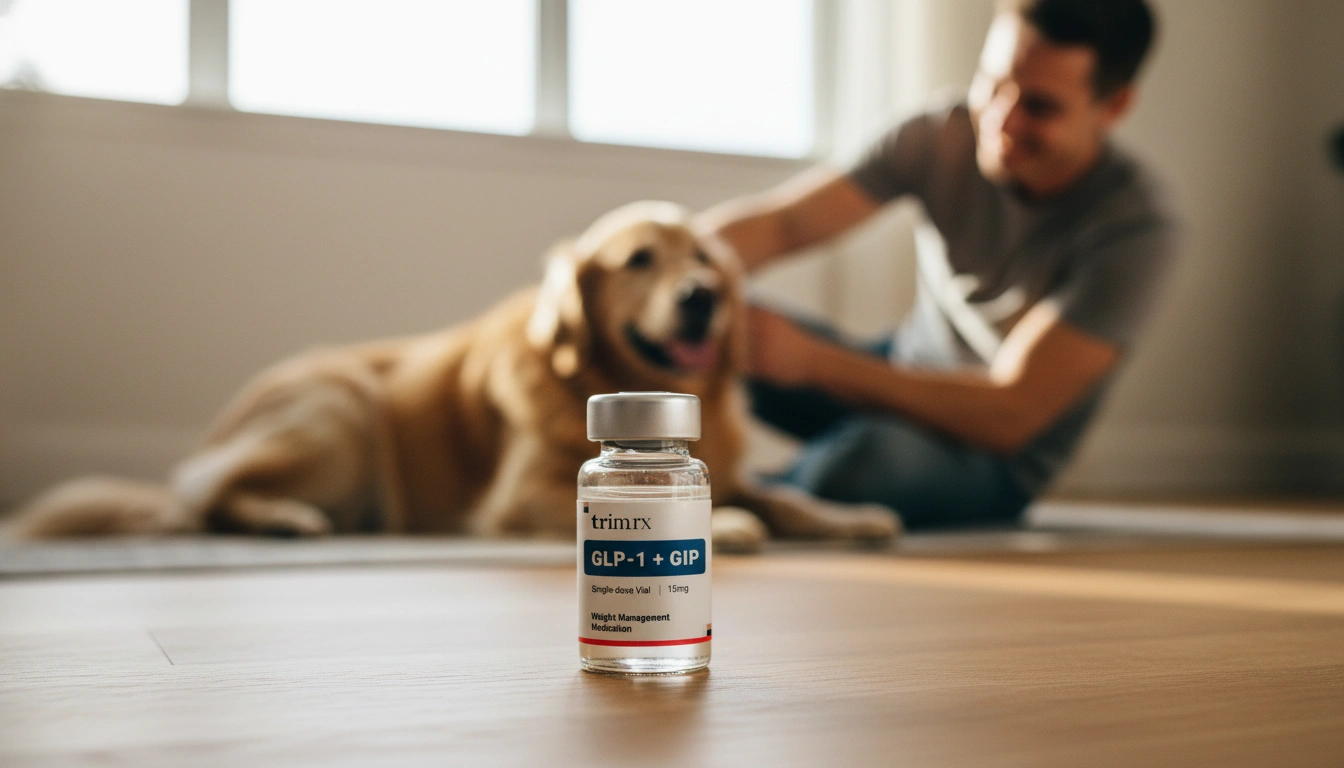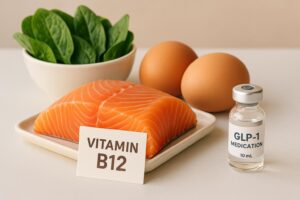Does Cinnamon Increase GLP-1? Exploring the Connection Between Cinnamon and Metabolic Health

Introduction
Cinnamon is not just a beloved spice that adds warmth and flavor to our favorite dishes; it has also held a place in traditional medicine for centuries, revered for its numerous health benefits. Did you know that cinnamon has the potential to influence important metabolic hormones such as glucagon-like peptide-1 (GLP-1)? This intriguing relationship is gaining attention as researchers continue to explore cinnamon’s role in managing blood sugar levels and improving insulin sensitivity.
In recent years, the prevalence of type 2 diabetes and metabolic syndrome has surged, prompting a critical examination of dietary components that could help mitigate these conditions. Cinnamon, particularly varieties like Ceylon and Cassia, has been studied for its potential to improve glycemic control, partly through its effects on GLP-1, an incretin hormone that plays a significant role in glucose metabolism.
In this blog post, we will delve into the science behind cinnamon and its relationship with GLP-1, exploring how it may contribute to metabolic health. We’ll also discuss the mechanisms by which cinnamon operates, review relevant research findings, and highlight how incorporating cinnamon into our diets might be beneficial. By the end of this article, you will have a comprehensive understanding of whether cinnamon truly increases GLP-1 levels and its implications for weight management and overall health.
The Science of GLP-1 and Its Role in Metabolism
GLP-1 is an incretin hormone produced in the intestines in response to food intake. It plays a multifaceted role in glucose metabolism, including:
- Stimulating Insulin Secretion: GLP-1 enhances insulin release from the pancreas when glucose levels are elevated, helping to lower blood sugar levels.
- Inhibiting Glucagon Release: It suppresses glucagon secretion, which is crucial for regulating glucose production by the liver.
- Slowing Gastric Emptying: By delaying gastric emptying, GLP-1 can help reduce the speed at which glucose enters the bloodstream, contributing to better postprandial (after eating) blood sugar control.
- Promoting Satiety: GLP-1 is known to enhance feelings of fullness, which can reduce overall food intake and aid weight management efforts.
The significance of GLP-1 in metabolic health cannot be overstated, especially in the context of obesity and type 2 diabetes, where insulin resistance is a common challenge.
Cinnamon: A Spice with Potential Health Benefits
Cinnamon, derived from the inner bark of Cinnamomum trees, has been used for centuries in cooking and traditional medicine. Its compounds, particularly cinnamaldehyde and various polyphenols, are believed to contribute to its health benefits. Some of the proposed mechanisms through which cinnamon may exert its effects on metabolic health include:
- Antioxidant Activity: Cinnamon contains powerful antioxidants that can help reduce oxidative stress, a factor known to contribute to insulin resistance and metabolic disorders.
- Anti-inflammatory Properties: Chronic inflammation is a key player in the development of insulin resistance. Cinnamon may help alleviate inflammatory markers in the body.
- Enhancing Insulin Sensitivity: Some studies suggest that cinnamon can enhance insulin sensitivity, making it easier for cells to absorb glucose and use it for energy.
These properties make cinnamon an appealing candidate for further investigation in the quest for effective dietary interventions for managing blood sugar levels.
Cinnamon and GLP-1: What the Research Says
Research into the effects of cinnamon on GLP-1 levels has produced encouraging findings. A notable study found that consuming a specific dose of cinnamon (3 grams) significantly increased GLP-1 concentrations in healthy subjects. Here are some key takeaways from the research:
-
GLP-1 Response to Cinnamon Intake: In a controlled trial, participants who consumed a rice pudding meal supplemented with 3 grams of cinnamon demonstrated a marked increase in GLP-1 levels compared to those who did not consume cinnamon. This suggests that cinnamon may stimulate the production of GLP-1 in the gut.
-
Impact on Insulin Levels: The same study observed a reduction in postprandial insulin levels following cinnamon consumption. This dual effect of increasing GLP-1 while lowering insulin suggests a more efficient insulin response, potentially improving glucose management.
-
Effects on Blood Sugar Levels: While the primary focus has been on GLP-1, some studies have indicated that cinnamon can lower postprandial blood glucose levels. This effect is likely linked to the enhanced GLP-1 secretion, which helps regulate glucose metabolism.
These findings underscore the potential of cinnamon as a natural agent for enhancing GLP-1 levels and improving metabolic health, particularly for those dealing with insulin resistance or type 2 diabetes.
How to Incorporate Cinnamon into Your Diet
If you’re eager to harness the benefits of cinnamon, here are some practical ways to incorporate it into your daily routine:
- Spice Up Your Meals: Add cinnamon to oatmeal, smoothies, or yogurt for a flavorful and healthful boost.
- Baking: Use cinnamon in baked goods like muffins, pancakes, or bread.
- Savory Dishes: Incorporate cinnamon into savory dishes, such as stews or curries, to enhance flavor and health benefits.
- Cinnamon Tea: Brew cinnamon sticks in hot water to make a soothing tea.
- Supplements: If you prefer a more concentrated form, consider cinnamon supplements, but always consult with a healthcare provider before starting any new supplement regimen.
The Role of TrimRx in Your Health Journey
At TrimRx, we are dedicated to supporting individuals on their journey to healthier lifestyles through personalized weight loss solutions. While incorporating cinnamon into your diet can be a beneficial step, we understand that sustainable weight loss often requires a comprehensive approach. Our medically supervised weight loss programs combine advanced medical science with compassionate care, ensuring that each individual receives a personalized treatment plan tailored to their unique needs.
If you’re exploring ways to improve your metabolic health and achieve your weight loss goals, we invite you to take our free assessment quiz. This quiz will help determine your eligibility for our prescription weight loss medications, including options like Semaglutide and Tirzepatide, designed to support your journey effectively. You can find the quiz here: Take the Free Assessment Quiz.
Additionally, we offer quick-access supplements such as GLP-1 Daily Support and Weight Loss Boost that can complement your weight loss journey. These products are designed to support overall wellness during your efforts, ensuring that you have the tools you need for success.
Conclusion
Cinnamon’s potential to increase GLP-1 levels presents an exciting avenue for improving metabolic health and managing conditions like type 2 diabetes and obesity. With its rich history and promising research backing its benefits, cinnamon can be a valuable addition to a balanced diet aimed at enhancing insulin sensitivity and promoting weight loss.
As we continue to explore the relationship between dietary choices and metabolic health, it’s essential to remember that no single food can serve as a panacea. A comprehensive approach, including personalized support and lifestyle changes, is crucial for achieving lasting results. At TrimRx, we are committed to providing that support, merging innovative telehealth solutions with effective weight loss strategies, all designed to help you achieve your health goals.
FAQ
How much cinnamon should I consume to see benefits?
While studies have used various doses, around 1 to 3 grams of cinnamon daily is often suggested for potential health benefits. However, individual needs may vary, so it’s best to consult with a healthcare provider.
Can cinnamon replace diabetes medications?
Cinnamon should not be seen as a replacement for prescribed medications. It may complement a comprehensive treatment plan, but always discuss any changes with your healthcare provider.
Are there any side effects of consuming cinnamon?
Cinnamon is generally safe for most people when consumed in moderation. However, excessive intake, particularly of Cassia cinnamon, can pose risks due to high coumarin levels. Always choose quality sources, preferably Ceylon cinnamon, for regular use.
How can I take cinnamon safely?
You can incorporate cinnamon into your diet through cooking or baking, or as a tea. If you’re considering supplements, consult with a healthcare provider for guidance on appropriate dosages.
In conclusion, cinnamon’s potential to enhance GLP-1 levels and support metabolic health opens new doors for dietary interventions in managing weight and improving overall well-being. Together, let’s explore how personalized, medically supervised weight loss programs can further enhance your health journey.

Transforming Lives, One Step at a Time
Keep reading
Vitamin B12 and GLP-1 Medications: What to Know
GLP-1 medications can lower B12 absorption and intake; learn symptoms, food sources, supplement options, and how to monitor levels.
Semaglutide Injection Site Reactions: What To Know
Learn why semaglutide injections can cause redness, swelling or nodules, how to prevent and treat them, and when to seek medical care.
TrimRx vs Friday’s
Compare TrimRx and Friday’s telehealth GLP-1 weight-loss programs: pricing, medical support, coaching, delivery, and which fits your needs.



